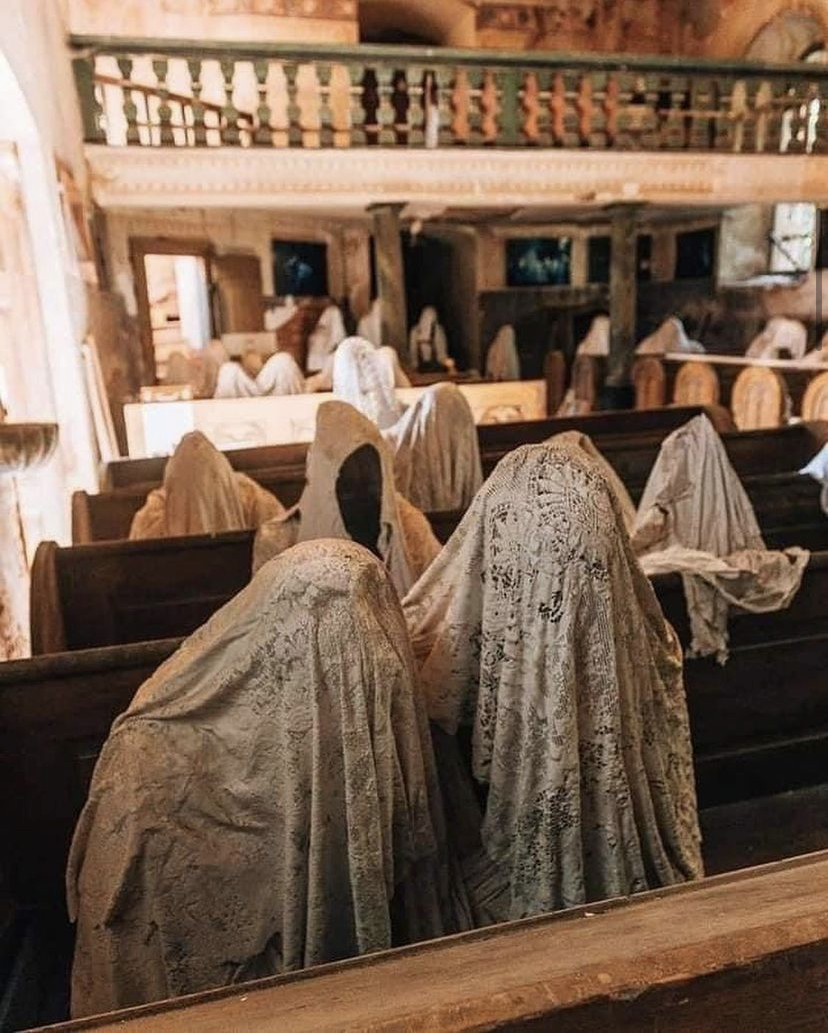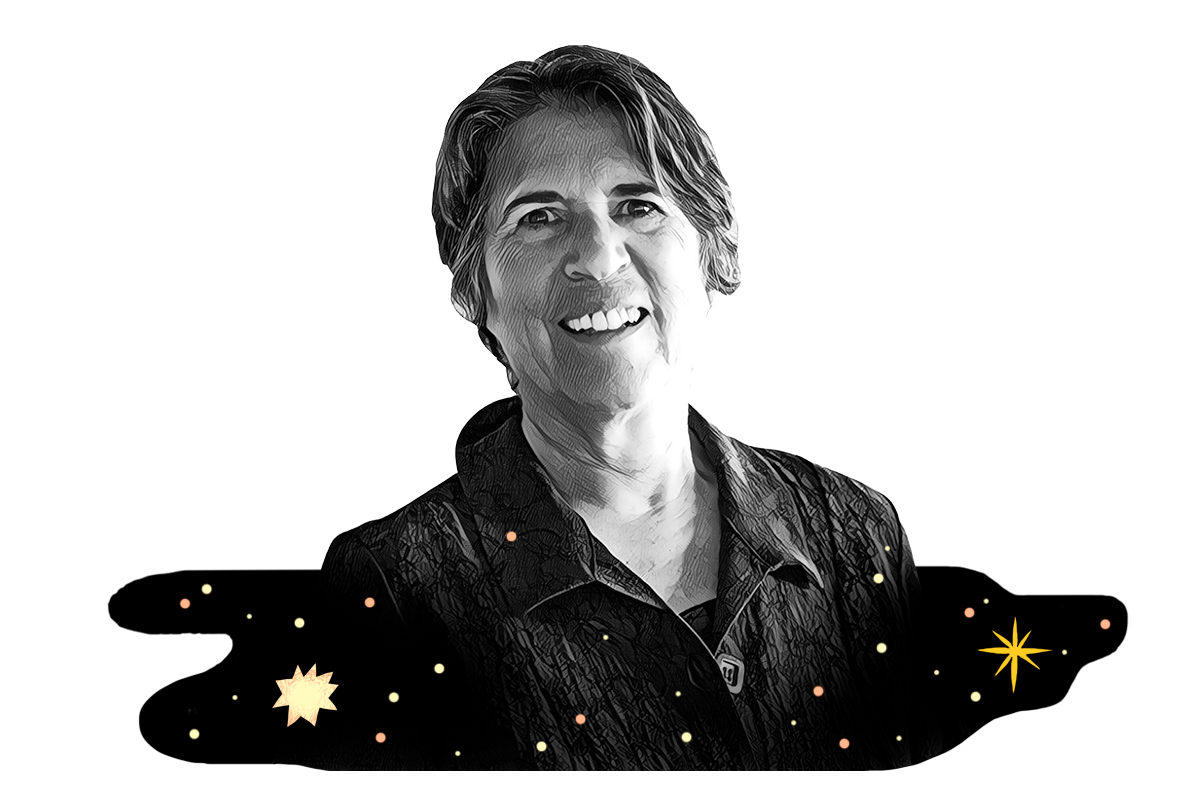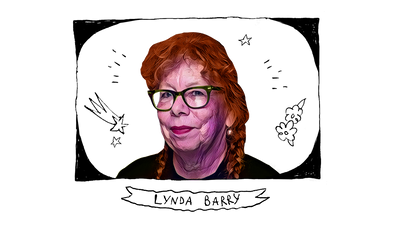In this edition of The Order:
- A dive into Writing Down the Bones, the Buddhism-influenced writing guide
- The ghosts of St George's Church in a tiny Czech town
- Links on creativity in our dogs, restoring art in Brazil, what the experts have to say about DALL-E, and more
- This is the energy we want for you this week
Creative roadmaps
What Zen Buddhism knows about writing that we don't
We now know the power and potential of Buddhist practices, even in the West – mindfulness and meditation practices are widely recommended, and popular Western influencers like Brene Brown draw heavily from its principles. And we know how powerful a personal writing practice can be; James Pennebaker's research found it can have outcomes comparable to talk therapy. So maybe it shouldn't be surprising that one of the most impactful creative texts of the past 50 years is about how to combine both: Natalie Goldberg's cult classic Writing Down the Bones.
Goldberg began practicing "sitting meditation" in 1974; she studied with spiritual leader Dainin Katagiri Roshi, and began to become seriously invested in some of the principles of Zen Buddhism. Although she didn't initially see it as connected to her writing practice, she found that she was having an easier time understanding Buddhist practices if she considered them through the lens of writing. “Why do you come to sit meditation?" Katagiri Roshi eventually asked her. "Why don’t you make writing your practice? If you go deep enough in writing, it will take you everyplace."
Goldberg found a range of ways her meditation practice felt connected to a healthy writing practice – and compiled some of her thoughts on this in Writing Down the Bones, which collects teachings that Goldberg would share in her writing practice as well as personal observations from her own writing life and reflections on writing through a Buddhist lens.
Chögyam Trungpa, Rinpoche, a Tibetan Buddhist master, said, “We must continue to open in the face of tremendous opposition. No one is encouraging us to open and still we must peel away the layers of the heart.” It is the same with this way of practice writing: We must continue to open and trust in our own voice and process. Ultimately, if the process is good, the end will be good. You will get good writing.
In addition to the idea of writing as a long-term practice you must cultivate and maintain beyond any singular outcome, much like meditation, Goldberg also talks about the importance of a meditator's "beginner's mind" as part of a writing life. Beginner's mind asks us to keep "an attitude of openness, eagerness, and lack of preconceptions," maintaining the humility of a first-timer at something no matter how long we've been practicing it. Goldberg says of her own writing, "I had to get slow and dumb (not take anything for granted) and watch and see how everything connects, how you contact your thoughts and lay them down on paper."
Another major tenet of Buddhist practice outside the more "approachable" elements of basic meditation is detachment, from worldly things but also from the concept of "self." This concept of selfhood is in some ways comparable to the Western concept of "ego," which we use both as a kind of selfhood according to psychology and as a way to describe someone who's overly self-centered. Goldberg's philosophy gracefully bridges these concepts and calls on us to decenter ourselves or what we want our work to be when we sit down to write: "When you write, don’t say, 'I’m going to write a poem.' That attitude will freeze you right away. Sit down with the least expectation of yourself; say, 'I am free to write the worst junk in the world.'" Instead, Goldberg wants her students to focus on practicing writing down "the bones": "the essential, awake speech of their minds."
This philosophy informs Goldberg's basic writing exercise, one that recalls both Lynda Barry and Julia Cameron in its direction and repetition:
The basic unit of writing practice is the timed exercise. You may time yourself for ten minutes, twenty minutes, or an hour. It’s up to you. At the beginning you may want to start small and after a week increase your time, or you may want to dive in for an hour the first time. It doesn’t matter. What does matter is that whatever amount of time you choose for that session, you must commit yourself to it and for that full period:
Keep your hand moving. (Don’t pause to reread the line you have just written. That’s stalling and trying to get control of what you’re saying.)
Don’t cross out. (That is editing as you write. Even if you write something you didn’t mean to write, leave it.)
Don’t worry about spelling, punctuation, grammar. (Don’t even care about staying within the margins and lines on the page.)
Lose control. Don’t think. Don’t get logical.
Go for the jugular. (If something comes up in your writing that is scary or naked, dive right into it. It probably has lots of energy.)
Goldberg says that her ideal is to write like this every day, and to try to fill a notebook per month. What writing practice goals can you set, from this book or on your own?
Creative soundbites
🌀 What does it mean to be creative on command? What about for animals? Researchers have found that dolphins and now also dogs are capable of empirical creativity: they can learn the "create" command, which prompts them to produce a behavior their trainers haven't seen before and haven't taught them
🤖 Four authorities on artificial intelligence, the brain, and creativity (and GPT-3, a language-generating model that’s a close cousin to DALL-E) explain what they think of DALL-E’s capabilities and artistic potential
🎸 "I became enthralled with Bowie’s theatricality and otherworldly artistic approach. I even bought hair dye in an attempt to replicate his look, before quickly realizing that orange was not my color." How one artist found listening to Bowie during quarantine reignited her creativity.
🛰️ The director of Andor's season finale on his creative approach
🖼️ After Bolsonaro supporters attempted a coup in January, priceless art in the Brazil's Congress, Supreme Court and presidential palace was damaged – now, professional restorers are working to repair it.
Visual of the week

Originally built and consecrated in 1352, St. George's church in the small town of Lukova had seen better days. A combination of major structural problems beginning in the 60s and a growing sentiment that the church was bad luck or haunted meant that locals no longer used it, preferring instead to hold mass outside.
In 2012, artist Jakub Hadrava had an idea to repurpose the church building – using his art classmates as models, he crafted 32 sheet ghosts to populate the church, sitting in its pews and standing in its aisles. He says they represent the Sudeten Germans, who were driven out of the area after World War II. Now, tourist traffic – and donations – to the church mean it may be possible to repair.
| Tell friends about us → Win prizes | |||
| 2 Referrals Hero's Circle Infographics | 10 Referrals Week of Creative Warm-ups | 25 Referrals Early Access to the Narrative therapy platform | |
| Check your referrals | |||
| Powered by Viral Loops | |||
Meme of the week

Today's newsletter is brought to you by Rachel Kincaid, Alyona Belyakova, and Egor Mostovshikov









